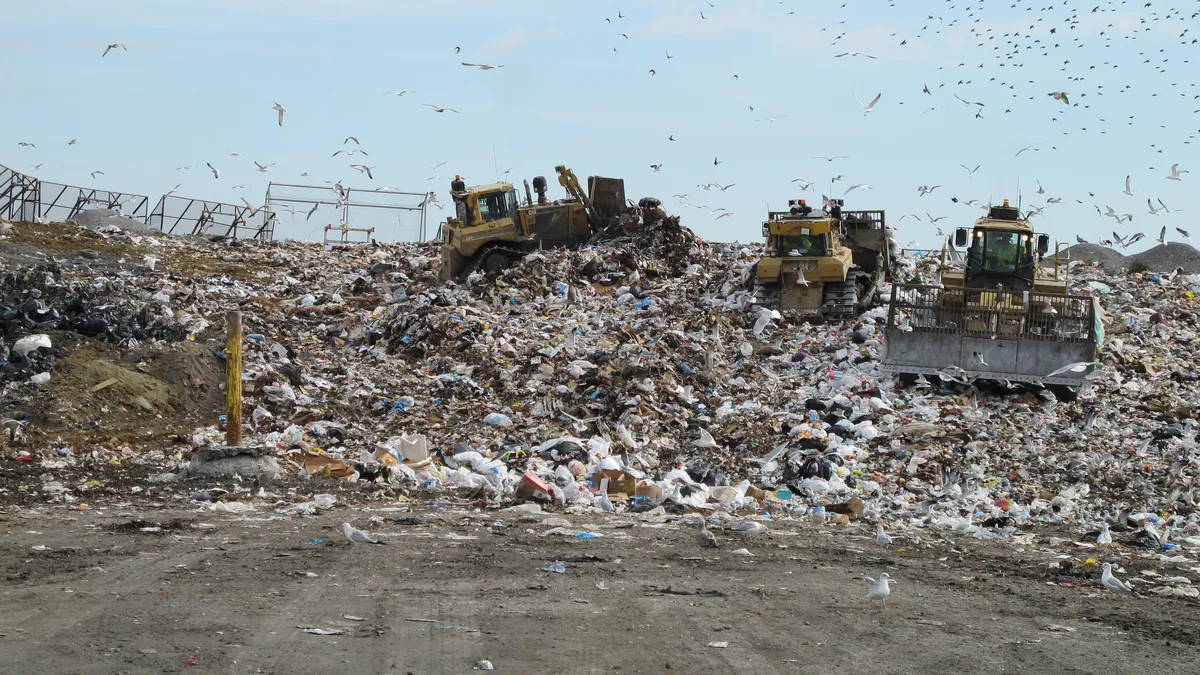Dive Brief:
- An environmental group opposed to enlarging the Ontario County Landfill had two of three of its main issues nixed by a judge. The Finger Lakes Zero Waste Coalition requested a hearing on questions it has about air pollution and air quality around the landfill, noise from the landfill, and the group's belief that an analysis of the site’s recycling operation is needed.
- New York Department of Environmental Conservation chief administrative law Judge D. Scott Bassinson ruled there will be no hearing on recycling or air quality. The third issue of alleged noise coming from the landfill will be addressed by the court in a hearing today. Bassinson is mulling FLZWC’s issues as part of the DEC’s review of a permit for the 43-acre enlargement of the landfill.
- In its petition to DEC, FLZWC contended that the emissions from Seneca Energy II, LLC’s landfill gas-to-electricity plant at the site should have its emissions considered to be coming from one source rather than two, as the plant is currently regulated. The petition argues that the county and landfill operator Casella Waste Systems acted together to circumvent emissions accounting rules that would make both operate under stricter regulations of the Clean Air Act. The current permit treats Seneca Energy’s plant emissions as not the same thing as pollution from the landfill, which is owned by the county and operated by Casella.
Dive Insight:
The court said that FLZWC hadn’t made a good enough argument for the court to reconsider DEC’s permit for the landfill. But FLZWC president Doug Knipple his group will consider appealing the judge’s ruling.
Although a New York DEC judge ruled against two of three issues that Finger Lakes Zero Waste Coalition has with the proposed landfill expansion, the verdict may still be out for these and other arguments against the landfill’s would-be expansion of operations.
It may technically be legal, but considering odors coming from a landfill and odors coming from a recycling plant harvesting gas from that landfill to generate electricity as two separate odor sources, rather than one source seems perplexing.














